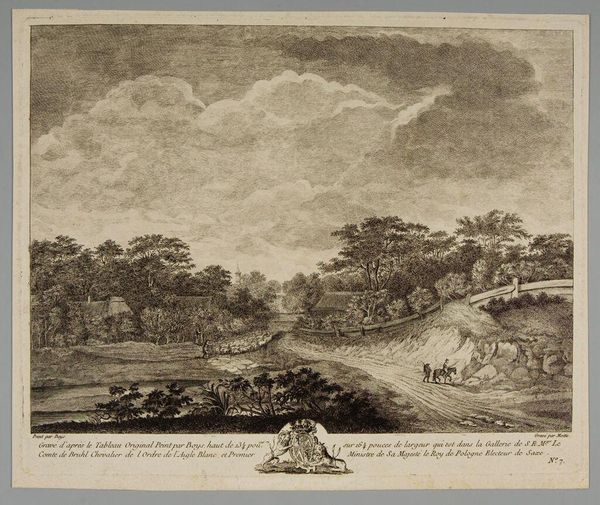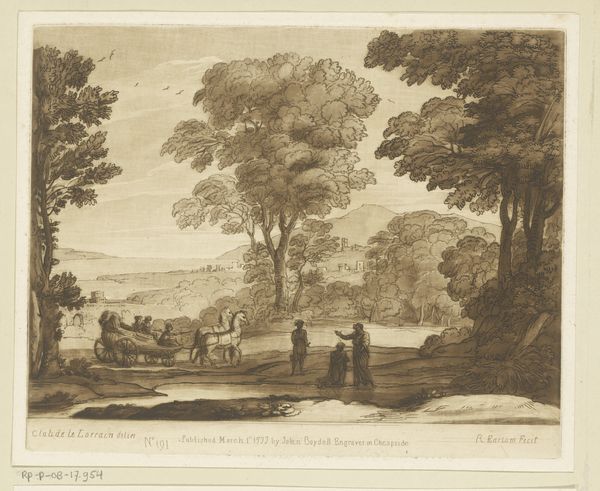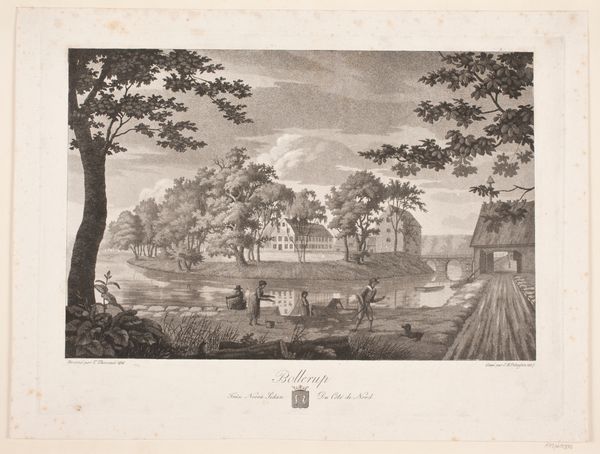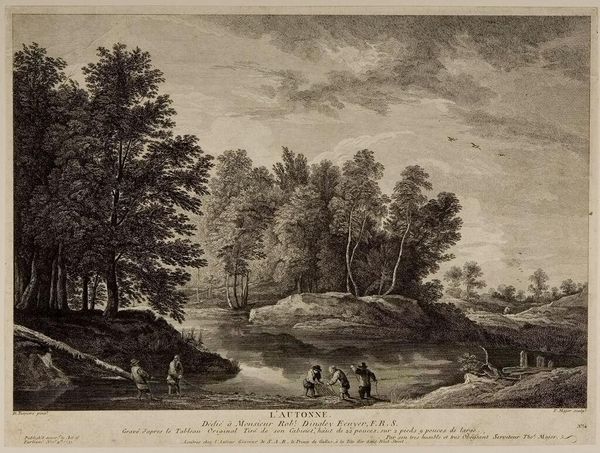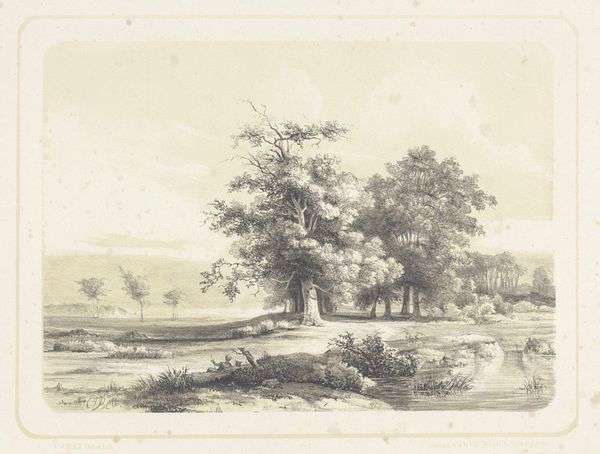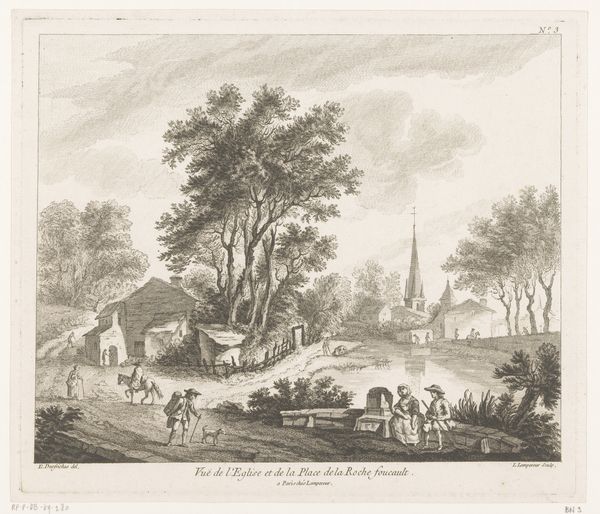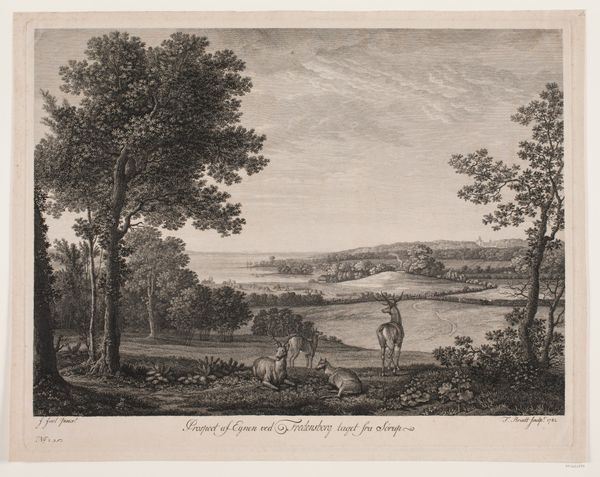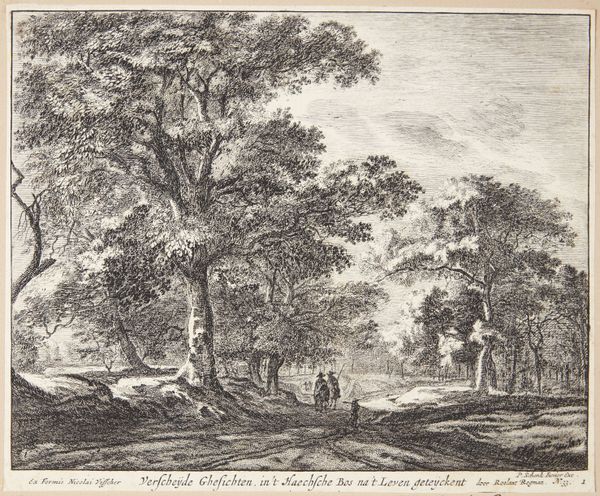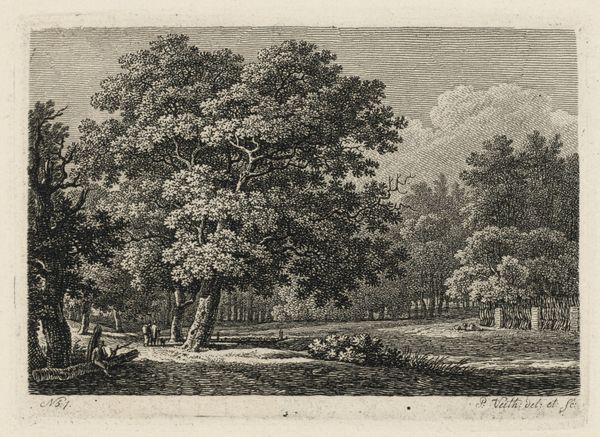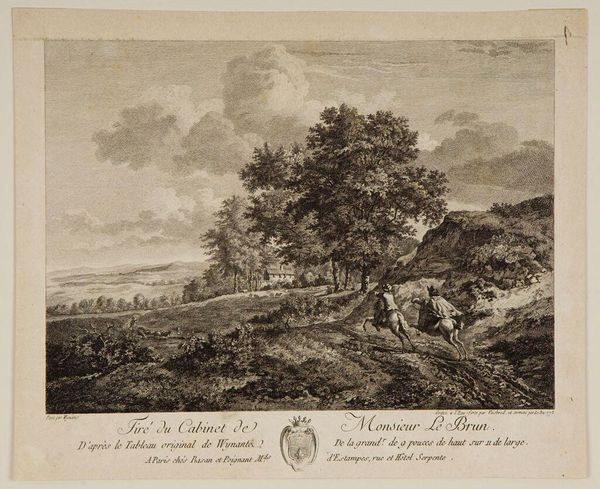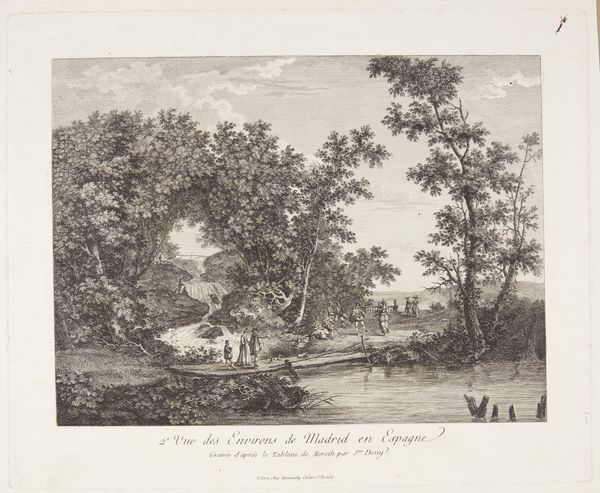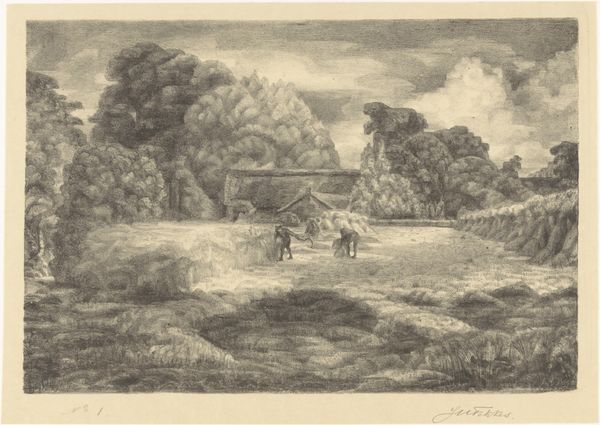
Nuværende levninger af Niels Ebbesens borg Nørreriis. E Storch del. 1810 - 1910
0:00
0:00
Dimensions: 286 mm (height) x 391 mm (width) (bladmaal), 243 mm (height) x 347 mm (width) (plademaal), 189 mm (height) x 306 mm (width) (billedmaal)
Curator: Here we have “Nuværende levninger af Niels Ebbesens borg Nørreriis. E Storch del.", an aquatint and etching print made sometime between 1810 and 1910. What are your initial thoughts on this landscape? Editor: There's a certain somberness to it, a weightiness emphasized by the muted tones and the focus on what appears to be ruins, set amongst the structures here, smoke bellowing. Curator: Precisely. The print depicts the supposed remnants of Niels Ebbesen's castle, a figure from Danish history who, in many ways, became a symbol of resistance. Considering it's a romantic landscape, one wonders about its nationalistic undertones in portraying Ebbesen’s legacy. Editor: Absolutely. Looking closer, the aquatint medium really lends itself to capturing the textural differences—the rough earth of the ruin mound, the smooth hides of the grazing livestock in the field— it's interesting how the material itself is deployed to depict the socioeconomic layering of the scene: Land, livestock, structures… Curator: That's a key observation. It's not merely about a castle's literal remains; it's about the ideological remains too. Who gets to claim the narrative of Danish heroism? And for what purpose? The contrast between the pastoral foreground and the historical weight of the background invites such a reading. Editor: It really calls attention to the labor involved in its creation. From the mining of metals for the etching plates to the physical labor of the printer, each step contributing to the shaping and dissemination of this vision of national heritage, it really emphasizes who could even reproduce this type of historical image. Curator: And even the labor involved in upholding those romantic myths is being underscored here by its emphasis of daily labor. By putting the cattle at the forefront and reminding us of that continued work. This is a great work to encourage contemporary reflections on what persists in shaping social and national identity. Editor: I agree. It reminds us how landscapes aren't just passively observed but are actively constructed, physically and ideologically, to fulfill societal narratives. Curator: The choice of etching and aquatint reminds us to reconsider how labor is inextricably tied to meaning and national narrative.
Comments
No comments
Be the first to comment and join the conversation on the ultimate creative platform.
